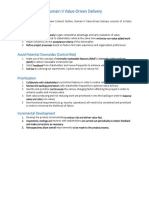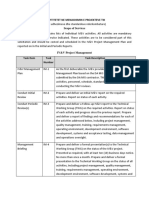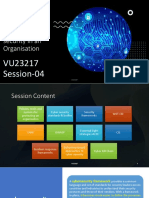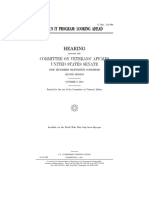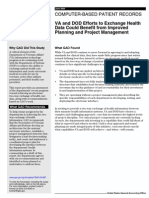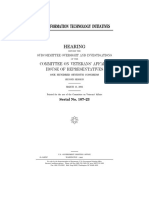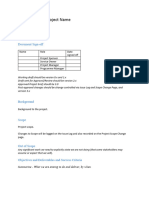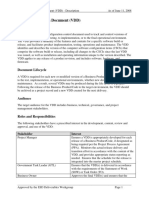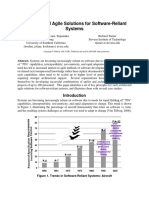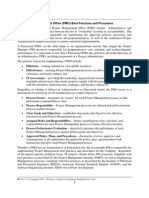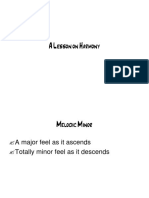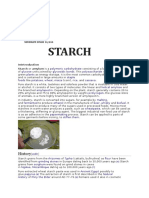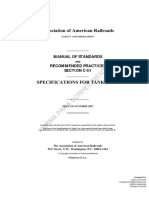0% found this document useful (0 votes)
86 views9 pagesModified
The document summarizes a discussion on transitioning from the Project Management Accountability System (PMAS) project management process to the new Veteran-focused Integration Process (VIP) at the OSEHRA Architecture Work Group meeting, including an overview of the key differences between PMAS and VIP such as changing from a 6 month delivery cycle to 3 months and incorporating more agile practices.
Uploaded by
lakshuCopyright
© © All Rights Reserved
We take content rights seriously. If you suspect this is your content, claim it here.
Available Formats
Download as PPT, PDF, TXT or read online on Scribd
0% found this document useful (0 votes)
86 views9 pagesModified
The document summarizes a discussion on transitioning from the Project Management Accountability System (PMAS) project management process to the new Veteran-focused Integration Process (VIP) at the OSEHRA Architecture Work Group meeting, including an overview of the key differences between PMAS and VIP such as changing from a 6 month delivery cycle to 3 months and incorporating more agile practices.
Uploaded by
lakshuCopyright
© © All Rights Reserved
We take content rights seriously. If you suspect this is your content, claim it here.
Available Formats
Download as PPT, PDF, TXT or read online on Scribd
/ 9






